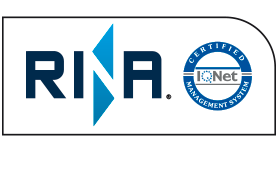WHAT IS AN INDUSTRIAL AUTOMATION CABLE?
HOW IT IS? WHAT IS AN INDUSTRIAL AUTOMATION CABLE USED FOR?
WHAT DOES AN INDUSTRIAL AUTOMATION CABLE LOOK LIKE?
 |  |  |
|---|
CABLE FOR INDUSTRIAL AUTOMATION
Before understanding the concept of cable for industrial automation, we must understand the concept of Automation (from the Latin Automatus) which means moving by itself is an automatic control system by which mechanisms check their own functioning, taking measurements and introducing corrections, without the need for human interference. In its modern usage, automation can be defined as a technology that uses programmed commands to operate a given process, combined with information feedback to determine that the commands are executed correctly, often used in processes previously operated by humans, it is the application of computerized or mechanical techniques to reduce the use of labor in any process, especially the use of robots in production lines. Automation reduces costs and increases production speed. Source: Lacombe (2004) Source: Wikipedia.
The cable for industrial automation serves some main areas of automation:
Automation can be divided into some main branches:
The industrial automation of a machine/process essentially consists of choosing, from among the various technologies at our disposal, the ones that best adapt to the process to be developed and the best way to interconnect them to always guarantee the best cost/benefit ratio. . Industrial automation is typically divided into 3 levels:
- Field Level – consisting of the elements to be controlled (e.g. Motors) and the detection elements (e.g. sensors)
- Control Level – As the name suggests, it is the level where the elements that will control the process are located (e.g. automatons)
- Supervision Level – Consists of human-machine interface and data acquisition programs (this level must not directly interfere with the operation of the process)
Another important point when automating a machine/process is to think about the future, thinking that the initial functionalities of a machine/process, in most cases, may be very far from what it will have in the future. Source: Wikipedia
The cable for industrial automation can be for mobile or fixed use, in addition to transmitting energy, the cable for industrial automation must transmit the signals necessary for the perfect functioning of the equipment, each one requires a communication protocol, and each cable has a characteristic specifies to meet this requirement.
It may happen that the industrial automation cable is installed in an aggressive environment, requiring adequate identification of the correct industrial automation cable to be used, which may be resistant to chemicals, gasoline, etc.
Another factor to be considered in the cable for industrial automation is in relation to protection against electromagnetic interference, which is determined by the environment in which the cable for industrial automation will be installed. The issue of EMI (crosstalk) at an industrial level must be very well studied and considered.
What is it? Other Cables…
Related Cables
CABLE FOR INDUSTRIAL AUTOMATION - BFIC 300V NBR 10300 INSTRUMENTATION CABLE
CABLE FOR INDUSTRIAL AUTOMATION - RE-2X(St)2YSWBY-fl
CABLE FOR INDUSTRIAL AUTOMATION - INSTRUMENTATION CABLE BFI 300V NBR 10300
Main cities and regions in Brazil where Innovcable serves Cable for industrial automation:
“Through our central office in São Paulo, we serve”
“Through our central office in São Paulo, we serve”
“Through our center in Rio de Janeiro, we serve”
“Through our center in Rio de Janeiro, we serve”
“Through our central office in São Paulo, we serve”
“Through our center in Rio de Janeiro, we serve”
“Through our center in Rio de Janeiro, we serve”
“Through our center in Rio de Janeiro, we serve”
“Through our central office in São Paulo, we serve”
“Through our central office in São Paulo, we serve”
“Through our central office in São Paulo, we serve”
“Through our central office in São Paulo, we serve”
“Through our central office in São Paulo, we serve”
“Through our central office in São Paulo, we serve”
“Through our central office in São Paulo, we serve”
“Through our central office in São Paulo, we serve”
“Through our center in Rio de Janeiro, we serve”
“Through our center in Rio de Janeiro, we serve”
“Through our center in Rio de Janeiro, we serve”
“Through our central office in São Paulo, we serve”
“Through our central office in São Paulo, we serve”
“Through our central office in São Paulo, we serve”
“Through our center in Rio de Janeiro, we serve”
“Through our center in Rio de Janeiro, we serve”
“Through our central office in São Paulo, we serve”
“Through our central office in São Paulo, we serve”
































